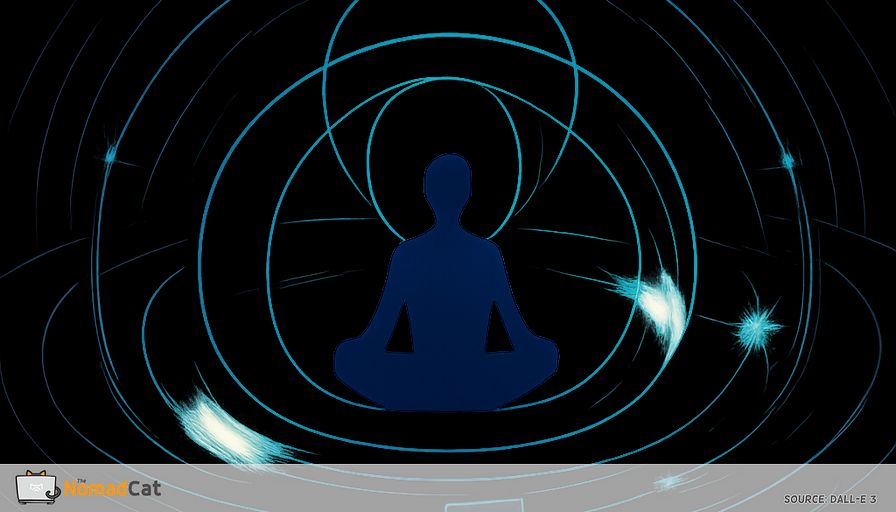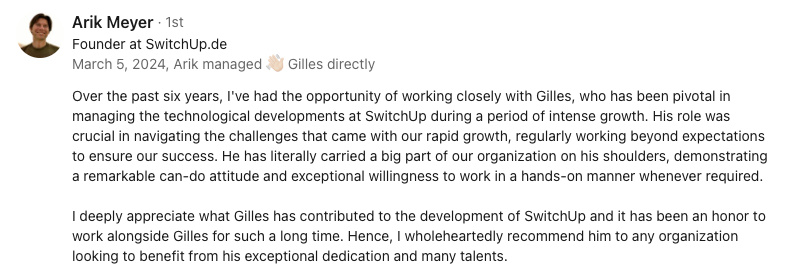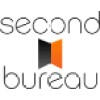Abstract:
The article argues that independent tech workers can build more sustainable, creative, and enjoyable careers by organizing their work and life around natural cycles, rather than rigid routines. It highlights how recognizing patterns in personal energy, market demand, and life events enables freelancers and consultants to better align client projects, creative work, and rest, making their portfolio careers more resilient and less stressful. Drawing on distinctive examples—such as Paul Jarvis scheduling creative projects for the quiet summer months and Sacha Chua using quarterly reviews to match work with her natural focus—the article shows that cyclical planning, as practiced by both individuals and organizations like Basecamp, prevents burnout and enhances long-term satisfaction. It provides practical tools for tracking personal rhythms, aligning with market trends, and intentionally planning downtime for renewal, while also debunking myths about seasonality in tech work. Real-world anecdotes and advice on setting boundaries, building flexibility, and integrating overlapping cycles from personal, family, and market spheres reinforce the main message: portfolio tech careers thrive when treated as living systems that flex and adapt, and embracing cycles—rather than fighting them—is key to lasting independence and well-being.
Ever notice how some tech freelancers, consultants, and indie makers seem to stay afloat even when things get busy? Whether you’re juggling freelance gigs, consulting contracts, or building your own product, noticing the cycles that shape independent tech careers is key. There are busy months when everyone’s trying to launch, and quieter times that are perfect for learning or catching up. This isn’t just about changing your schedule with the seasons outside. It’s about tuning in to your own energy, what the market is doing, and those personal moments that always seem to land at the busiest times.
I’ve found that thinking in cycles—not rigid routines—makes my own portfolio work more sustainable, creative, and, honestly, a lot more fun. When I started blending freelance projects with consulting and my own indie experiments, I realized that set routines just didn’t hold up. In this article, I’ll share why cyclical planning beats straight-line routines, especially when you’re managing multiple clients or projects. You’ll get practical ideas for mapping your own rhythms, real examples (including a few from my own journey), and advice for building in flexibility and keeping burnout at bay.
You’ll find tips for spotting your best work phases, matching work to market trends, and turning downtime into your advantage. From simple tools for planning around seasons to setting good boundaries, this guide can help you create a portfolio rhythm that matches your goals and life.
The hidden power of cycles in independent tech careers
Rethinking seasonality for portfolio tech work
Seasonality isn’t just about the changing weather. For independent tech workers, it means paying attention to cycles in work and daily life—energy bursts, family commitments, and when clients are most active. Maybe a developer schedules creative projects during the quiet summer, then focuses on client work in the autumn. Some pros, like Paul Jarvis, plan their whole year this way. Others, like Steph Smith, match deep work with their personal creative peaks and set aside slower months for learning. Reports from freelancer networks show more tech workers mapping both their own energy and market trends, making their careers steadier and a lot more pleasant. Understanding these patterns isn’t just a productivity trick—it’s the base for a strong and enjoyable portfolio career.
Cyclical planning versus the straight line
Traditional jobs often push for steady, consistent productivity: same hours, same tasks, every day. But independent tech work rarely fits this style. Portfolio careers do better when following natural cycles—short spans of focused work, real breaks, and room to adjust. Some organizations use cycles like Basecamp’s six-week “Shape Up” periods or Agile sprints, always followed by a cool-down. Studies show that these cyclical models support better productivity and more satisfaction, while straight-line routines can lead to tiredness. Here’s the difference in short:
- Linear model: fixed schedule, constant output, little space for rest
- Cyclical model: bursts of focus, planned breaks, flexible for real-life needs
It works better to plan around these cycles than to force everything into a strict routine.
Why cycles matter more than routines
Ignoring natural cycles and just pushing through? That leads to burnout, missed chances, and a lot of stress—like trying to sprint a marathon all year. Studies show that building in downtime and recognizing slow seasons can actually prevent burnout and keep independent workers happier. According to recent insights, tech professionals who schedule quarterly learning sprints report higher satisfaction and lower burnout rates. Freelance data show that those who plan for cycles are more likely to stick with their careers for the long term. Embracing ups and downs beats fighting against them.
Why rhythm beats routine for portfolio tech workers
Routines break down, cycles flex
Anyone who’s tried keeping a strict routine or color-coded plan knows how quickly life knocks things off track. For independent tech workers juggling many projects, clients, and sometimes family, set routines can be just another thing to make you feel guilty. Suddenly, your perfect plan crumbles when a project overruns or a new opportunity pops up. Cyclical planning helps here—it adapts to real-life ups and downs, letting you adjust and recover as needed. Organizations like Basecamp plan in cool-down time after tough work cycles, and experts like Jenny Blake often suggest frameworks that use seasonal energy. This approach gives portfolio workers the space to rest or change course, without guilt.
Matching work to your natural and market rhythms
A rhythm-based approach means matching your work to your own energy and what’s happening in the market. You might schedule creative work when you have the most motivation, and use quieter periods for admin or learning. This stops you from fighting your own energy or slow market times. Independent consultants like Sacha Chua use quarterly reviews to find these patterns, helping with planning. Tools such as The Energy Project Audit can also help you find when you’re most productive so you can handle tough tasks during those peaks. It leads to more creativity and a smoother experience overall.
Flexibility sustains independence
The real advantage of rhythm-based planning is that it’s flexible. Instead of being trapped by a failing routine, you ride the natural ups and downs of motivation, personal needs, or market trends. This ability to adapt often keeps independent tech careers sustainable over the long run and avoids burnout. Studies back up that flexibility is key for career satisfaction and sticking with it. But how do you actually spot your own cycles? That’s where self-reflection tools and regular check-ins help, giving anyone a hopeful path toward a strong, independent career.
Mapping your unique portfolio rhythm
Finding your natural work cycles
Tracking your energy and focus is pretty simple. Here’s how I do it, and how you might try:
- Start with a quick energy audit—just jot down how you feel at different times each day.
- Use digital tools like RescueTime or Toggl to spot when you get the most done.
- Review patterns weekly to match work to your best hours.
After a few weeks, you’ll notice patterns—maybe you’re creative in the morning and better with admin in the afternoon. These small checks make it easier to match the right work to your best hours.
Weekly and quarterly reflections give more insights. Even a quick review each week—like the one in David Allen’s Getting Things Done—can show what’s working and what’s not. Templates such as YearCompass’s quarterly review help spot trends in motivation, focus, and satisfaction. You might find some months are better for learning, or that energy dips after finishing a big project. Regular reflection lets you change things up before small issues grow into big ones.
Chronotype questionnaires and mood charts go further:
- Tools like the MEQ or MCTQ help you know if you’re a morning person or not.
- Mood tracking apps help you see how mood and productivity shift.
Studies suggest matching tough work to your natural high points can raise both your performance and job happiness. If your best ideas come at strange hours, that’s just your cycle at work. But your own cycles are only half the story—market and client trends are just as important.
Reading the market’s seasonal signals
Many tech freelancers see that project demand, client budgets, and hiring cycles all follow patterns, often on a yearly or quarterly basis. For example, sending out proposals works better just before a new budget cycle, and big project launches tend to cluster at the start or end of a fiscal year. Simple demand forecasting helps you time your offers for when clients are most likely to say yes. For instance, landing more contracts in Q1 when companies start new projects, while summer often means less activity. Noticing these market cycles lets you plan business moves better, instead of working against the flow.
Quiet seasons are chances for growth, not just empty time. Many people use these months to update skills, refresh their portfolio, join networking, or build new relationships. This strategy, backed by advice from freelancer networks and business articles, helps keep your client pipeline strong and your skills relevant. A simple tip: set learning or outreach time during slow months so you’re ready when things get busy again.
Blending what you learn from your own personal rhythm and the market’s cycles leads to better, less stressful planning. Combining both helps keep income steady and refreshes your creativity, making a portfolio career stronger and more adaptable. With some self-knowledge and market smarts, you can build a career that bends with the seasons instead of breaking. Next up: how to design a portfolio rhythm that really fits your life and goals.
Designing your portfolio rhythm
Frameworks for mapping work to cycles
Making portfolio work sustainable often depends on good planning. Frameworks like the 12-Week Year or seasonal planning templates split the year into bite-size pieces, helping you match big projects or learning plans to the right season. The gains are clear:
- Clearer priorities for each block of time
- Natural points to pause and make changes
- Built-in moments to rest or pivot
Portfolio matrices can balance your many projects. By linking consulting, product development, and learning to the seasons they fit best, you avoid the overload of doing it all at once. For example, you might use the winter for client projects, spring for launching products, and summer for creative work or learning. Blocking out days or weeks for certain tasks gives structure, but doesn’t box you in.
Simple capacity forecasting tools—like a spreadsheet or checklist—help you know when work will get busy or slow down. You can plan downtime for rest or new opportunities. No need to run at full speed all year. Digital tools like Notion, Trello, or Asana offer templates for plotting out these cycles so you can adjust as needed. Now, let’s look at some real-life examples.
Real-world rhythms: stories from tech minimalists
Some independent tech workers batch their client projects into the busiest seasons, then save summer for creative work or skill-building. Paul Jarvis, for example, puts creative projects in the quiet summer months and does most client work in the fall. Sacha Chua uses quarterly reviews to decide which work to focus on, which helps her stay energized and avoid jumping between tasks too much. Intentional batching like this protects energy and keeps creativity alive.
Others, like Steph Smith, alternate deep work and public engagement. By saving tough tasks for peak motivation periods, and leaving community or outreach for quieter times, they get more done and avoid burnout. This rhythm puts big tasks at your personal high points, with slower moments for reflection or learning.
When I was leading a multicultural team in Beijing, I noticed my own energy peaked in the early mornings, so I scheduled strategic meetings then and saved admin work for quieter afternoons. It wasn’t perfect—sometimes I mixed up time zones or got lost in translation, but it helped me keep my focus and avoid burning out.
Organizations can do this too. Basecamp works in 6-week project cycles with breaks, which leads to higher satisfaction and more projects done without burning out. Google’s regular OKR reviews help teams stay on track. Cyclical planning works for both solo workers and big companies. Building in flexibility is the next step—making sure your independence lasts.
Building flexibility and slack into your portfolio
The value of white space and downtime
In portfolio tech work, leaving “white space” between projects is more than nice—it’s essential. Studies show that scheduling free time helps with recovery and prevents stress from taking over, especially when holding more than one role. It’s like leaving a field empty for a while so it can recover. This downtime, it’s not wasted; it keeps ideas fresh and the work strong, you know.
Downtime isn’t just for rest—it can lead to those surprise moments when solutions click. The “incubation effect” shows that stepping away from a stuck problem can give your brain the room to find answers. Many portfolio workers say their best ideas show up when making coffee or just staring out the window.
Those who plan slack time into their agendas report feeling more engaged and creative, and they bounce back faster from setbacks. Making space to rest isn’t just about comfort, it’s a smart way to stay productive and keep growing. Now, let’s look at how small habits prevent burnout and make your rhythm last.
Preventing burnout and building sustainability
Planning breaks, learning, or downtime during slower periods is smart for anyone wanting to avoid burnout and keep energy high. Using quiet moments to rest or gain new skills not only makes income more stable, but also keeps your drive strong. According to recent insights, tech professionals who schedule quarterly learning sprints report higher satisfaction and lower burnout rates. A good approach is putting these activities in your calendar ahead of time, so they’re a natural part of your plan.
Leaving buffer time between projects is another simple move. Not just for emergencies, but to reflect or take on unexpected opportunities. These gaps help you handle surprises and avoid the stress of back-to-back work. Regular check-ins with yourself—using a checklist or template—keep your rhythm healthy and catch problems early.
Reviewing and adjusting your rhythm as things change makes your independence last longer. This habit supports health and satisfaction, making it easier to weather ups and downs. Next up, how to take this cyclical planning from theory into daily work.
Putting cyclical planning into practice
Simple tools for seasonal planning
Quarterly reflection templates, like YearCompass or Michael Hyatt’s review, make it simple to pause, check on progress, and set new goals for coming months. You might download a template, write down wins and challenges, and then set fresh priorities. This process spots patterns in energy and workload, turning rough intentions into real plans.
Platforms like Notion, Trello, or Asana can make tracking your projects and cycles easier. You have all your deadlines and even “rest blocks” in one spot—no sticky notes all over your desk. Add a checklist from a freelancer union, and even a packed work life feels more in control.
Mixing these tools with regular self-checks keeps your portfolio rhythm flexible. Using frameworks from people like April Rinne or Jenny Blake, a quick review every season keeps your work in sync with both your personal and work goals. Next is setting boundaries for busy and quiet times so your cycles work for you and your clients.
Negotiating seasonal boundaries
Clear expectations about your availability—like planned holidays or breaks—make things run more smoothly with clients. A simple message, I'll have limited availability from July 15 to August 1 for summer break. Let’s check deadlines and make sure all’s covered, can stop problems before they start. Talking about these dates early is helpful, not a problem.
Suggesting options, like backup contacts or delegated work, keeps things moving during your time off. For example, During my absence, [colleague’s name] can step in for urgent matters, or I've put the next steps in our shared workspace. This shows clients you’re responsible and ready for anything.
Add context for these boundaries—using clear, unapologetic language. Boundaries aren’t just personal; they help make the work stronger and more reliable for everyone. But what happens when life changes your cycles?
Flexing your rhythm when life changes
Being flexible with your hours and clients is key when things shift at home or in your environment. Sometimes you’ll need to cut back, focus on certain projects, or pause demanding work to fit new circumstances. This helps transitions go smoother and makes things less stressful.
When I moved from Berlin to Lisbon in 2023, I had to adjust my work cycles to fit a new environment and culture. Regular reflection helped me adapt my portfolio approach. Learning new things or doing less client-intense work during tough periods can keep your business strong. For instance, you might focus on new tech or updating your portfolio if family life gets busy. Checking routines and asking for support from friends or family helps keep balance.
Every time I moved between countries and new work cultures—Beijing, Berlin, then Lisbon—regularly pausing to reflect and talk things through helped me reshape my portfolio approach for each chapter. Let’s look at common problems and myths about cycles in tech careers next—sometimes the best plans need a second look.
Pitfalls and misconceptions about cycles in tech careers
Common traps in cyclical planning
It’s tempting to say yes to every exciting project during energy highs—until your schedule is too crowded. Overcommitting like this is an easy way to burn out or do work that isn’t your best. Research says that a big chunk of tech freelancers wrestle with overwork, but using simple planning or a quick list of commitments helps keep life sane and steady.
Guilt in slow periods is another problem. Lots of independent workers get stressed when it’s quiet, but studies show downtime guilt can actually lower your energy and motivation. Being kind to yourself and seeing these slow times as normal is a much better—and healthier—way to keep moving forward.
One insight I’ve learned: during my time in China, local tech freelancers often plan their biggest launches just before the Lunar New Year, taking advantage of a burst of client activity. It’s a clever way to use the calendar, but if you overcommit, you’ll start the new year already tired.
Regular check-ins help you spot both overwork and guilt before they get serious. A short review every month or quarter, just as advised by experts like Jenny Blake and Adrian Chiles, can show you what needs adjusting. Now, let’s break down some common myths about seasonality in tech.
Debunking myths about seasonality
Myth: Productivity crashes during summer. Fact: The numbers don’t back this up—seasonal slowdowns tend to be small, and flexible planning can flatten most bumps. There’s no need to worry about a summer slump if your schedule is adaptable.
Another myth says only teachers or farmers need to care about seasonality. In truth, all knowledge work—tech included—is shaped by things like client budgets, company calendars, and personal energy. These cycles affect everyone, not just old-school seasonal jobs.
Lastly, some think teamwork or creativity only peak at certain times of year. But studies say the real magic is in a team’s environment and how safe everyone feels, not the season. Focusing on regular routines and a strong team does more good than chasing a special innovation season.
Stories from the field: how rhythmic minimalists thrive
Tech leaders and their seasonal strategies
Many well-known tech leaders have built their success by respecting cycles. Stewart Butterfield, for example, times launches to match market patterns and credits bursts of focused work and true breaks for sparking both creativity and resilience. Cal Newport and Matt Mullenweg both talk about using natural highs and lows to keep innovation flowing by working flexibly and asynchronously. Companies, like Basecamp, design their work around cycles too, with focused periods and cool-downs that raise stability and satisfaction.
The take-away: Cyclical planning works everywhere. Whether for a solo founder or a big team, space for both hard work and recoveries leads to stronger, more stable careers.
Independent minimalists making cycles work
Independent consultants also use cycles to their advantage. Paul Jarvis does creative work in the summer and saves most client work for fall and winter. Sacha Chua uses regular reviews and planned quiet times to stay focused and avoid burnout. These strategies aren’t always about working less—they’re about working smarter and taking care of your health long-term.
Plenty of freelancers plan their slow seasons for adding new skills or building their business. Industry surveys show those who use downtime for growth feel better about their work and stick with freelancing longer. Slow months are not a setback—they are a chance for improvement.
All these stories point to the same idea: A portfolio career that has cycles of work, rest, and renewal is not just possible, it’s important for true independence. Building a rhythm that adjusts to both personal and market changes is the heart of a steady tech career.
Integrating cycles for holistic portfolio planning
Mapping overlapping cycles for real sustainability
Planning your portfolio as a whole means seeing it like overlapping circles—personal, family, environment, and market cycles. These rarely line up, but the places they cross shape daily work and long-term success. When you see where they connect, you build a setup that isn’t just reacting but is flexible and based in real life.
Reflection, planning, and self-compassion: the holistic toolkit
Research and expert advice show that mixing regular reflection, planning in cycles, and self-kindness is most helpful for real independence and lasting satisfaction. Seeing your portfolio as a changing system—not as a fixed set of roles—keeps both well-being and staying power at the center.
Treating your portfolio as a living, adaptable system
A portfolio that shifts with cycles, like a living thing, does better than one stuck in old routines. When you give your plan space to change as life changes, you leave room for new growth, rest, and real satisfaction. Regular check-ins and a willingness to shift make a tech career fit, no matter how the seasons or your situation change.
Realizing and leaning into cycles, instead of clinging to rigid routines, can make independent tech work less of a struggle and more sustainable. You open space for creativity, rest, and long-term growth by syncing with your own peak energy, market trends, and the curveballs life throws. Honestly, after years of sprinting through projects, I’ve learned that a little slack in the schedule is worth its weight in gold—especially if you like having time for a good coffee or a walk in the Lisbon sun. Whether you use planning frameworks, seasonal reviews, or just a quick self-check, moving to cyclical thinking lowers stress and guilt when plans change. The strategies and stories here show that a flexible rhythm isn’t just a tip—it’s the root of a lasting, adaptable portfolio career.














